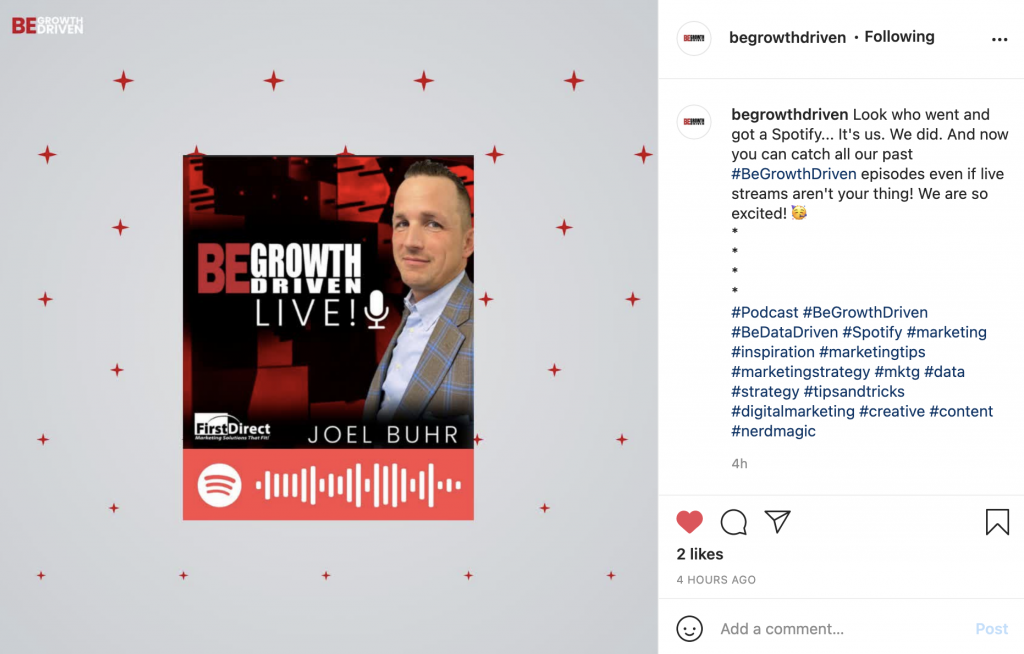What is the value of companies promoting Flow State?
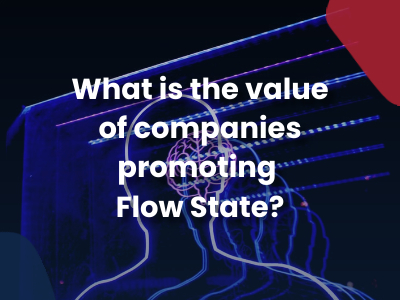
With many companies adjusting to being back in the office or a hybrid work model, employees are having to change their Flow State. What is a Flow State? (Sometimes just called Flow.) Flow is simply that state of mind in which we feel and perform our best and feel at ease. We all have systems or processes that make it naturally easier for us to access Flow. We can, however, also we can take steps that can allow us to access it.
Switching up work environments over the past year and a half has facilitated many employees having to adjust how the access their Flow State. What is the value of companies promoting Flow State? How has the changing work model impacted Flow? And how can you access your Flow State and increase productivity?
What is Flow?
Your Flow State is what is happening mentally when you are “in the zone.” It’s being fully engaged in a task. Flow was first identified and popularized by psychology researcher, Mihaly Csikszentmihalyi, from Claremont Graduate University in California. Everyone’s Flow State is different is directly connected to their effort and creativity. When you are in your Flow State, you brain is locked into process and knows exactly what it is going to do from one moment to the next.
What is the value of companies promoting Flow State?
Flow State sounds abstract and kind of like a fuzzy motivation tool. How can it actually benefit companies? The main way is that when employees are in their Flow State, they are doing their best work. Not only that, employees who work in a Flow State often gain greater satisfaction from their work and a that contributes to motivation and company loyalty. While working in a Flow State, employees have more concentrate and focus and therefore, less distractions. The clarity that comes form that leads to innovation. All of these things are qualities that make up exceptional employees.
Flow State can be broken by distraction. Employee distraction is also detrimental to companies. Microsoft’s 2020 WFH study found that before the pandemic, on average, workers felt like 52% of their day was wasted by distractions and unnecessary disturbances. A 2013 study found that employees who were frequently interrupted and dealt with a lot a distractions reported higher fatigue and burnout rates. Burnt out employees are more likely to make mistakes, call in sick, as well as look for new jobs. (As we’ve seen this year with The Great Resignation.)
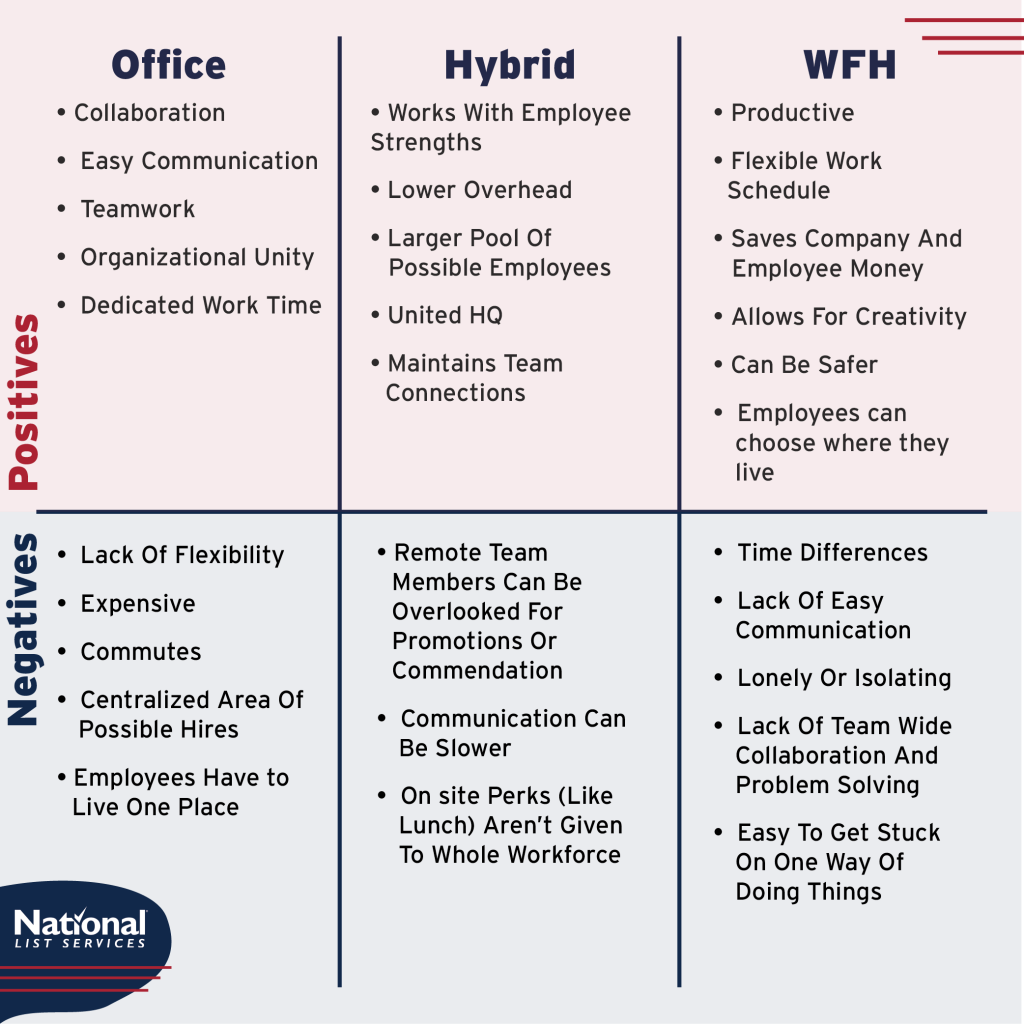
How has the changing work model impacted Flow?
One of the main advantages to a hybrid work model or allowing employees to choose weather or not they WFH, is that help each employee work in an environment that best suits them. Some employees can tap into their Flow State best in a quiet, comfortable space; weather that be at home or in the office, free of home’s distractions such as children or pets. Others like the background noise of a coffee shop. Some enjoy the collaboration of working in the office and having coworkers around them.
This year has given a lot of people an opportunity to find which type of work environment actually works best for them. Of the over 1,200 employees and 133 executives surveyed in Microsoft’s WFH study at the end of last year, 55% said they would prefer to still work remotely at least 3 days a week. And before this past year, many of those people probably wouldn’t have been given the chance to know what work environment worked best for them.
And how can you access your Flow State and increase productivity?
Here are the 2 main steps needed to tap into your flow state.
- First, you must observe yourself. For the next two weeks, observe yourself, notice what you’re doing, and look for the clues of flow: losing your sense of time or self, feeling that you’re acting with ease, gaining new insights, and having a positive feedback loop.
- Then, when you are in a state of flow, broaden your awareness: Notice and remember the activities surrounding you. Recognize what you’re physically doing and think about what you’re doing mentally.
What ways have you found to be effective in “getting in the zone” and accessing your Flow State?
An Update on… “The Apple Privacy Update”
With the upcoming release of Apple’s new Operating System and (another) Apple privacy controversy in the news this week, we thought it was a good time to bring this article back. 😜
This spring’s iOS updated promised increase security and user control for inter-app tracking and cookies. However, the changes are taking a lot longer to reach users than first promised. It seems like all the changes they announced were more for show than actually giving users more control over their personal data.
And…. on the topic of personal data: make sure you do the emergency update on your devices today! The update fixes a bug that makes the over 1.65 billion Apple devices worldwide vulnerable to Pegasus Spyware.
Pegasus spyware is particularly dangerous because unlike most spyware and malware, the user doesn’t need to click a link or open a suspicious email for it to be installed. The spyware doesn’t give the device’s user any indication that it was activated. This “zero click remote exploit” spyware was developed by Israeli cybersecurity firm NSO. The Pegasus spyware can turn a device’s microphone or camera on, and record even encrypted calls, texts, messages, and emails.
NSO has been subject to controversy in the past for it’s client list. They say that they only sell their spyware to government and organizations that meet strict human rights standards and who will use the spyware to track terrorists and criminals. However, the Pegasus spyware has been linked many times over the past couple years to organizations that do not meet those criteria.
It is interesting to see if this latest privacy controversy will impact the upcoming ios update or change Apple’s approach to large scale privacy initiatives in the future.
The (Un)Official Guide to The Apple Privacy Update
April 28th, 2021

The Apple privacy update rolling out this week that finally does what they’ve been threatening to do for a lonnnggggg time. Control over the ADFA (Apple’s Device Identifier for Advertisers) and other app tracking tools are being given directly to the users. What Apple decides to do when it comes to data privacy and marketing tools greatly impacts the entire industry.
Why? For one thing, 45.2% of smartphones users in the United States have an iPhone. Another reason is that they have marketed themselves as the company that is going to stand up for its user’s privacy and control, even if that means going against Facebook. Or the Government.
The big question is though… what does it mean for you? As a user and as an advertiser?
What does the privacy update actually do?
With the new update scheduled to go out this week, Apple is introducing a feature called “App Tracking Transparency.” What does it do? Well… it makes advertiser tracking between apps more transparent to users. Apple has made the ability to see (and change) what apps are tracking what for years. The difference now is that instead it being buried deep in settings, a pop-up window will show up on every app that tracks something or collects any data. This pop up (like the one for sharing location) will allow users to control what personal data each app has access to as well what other apps it can connect to.
What information are apps collecting/what are they collecting? Apps (and websites) can collect a surprising amount of information that users haven’t directly given them. Some apps track your physical location. They can use this information to serve you targeted ads based on where you are in the physical world. Knowing your physical location can also give you better recommendations on things “near you,” whether that be pizza for lunch or the weather forecast.
Apps also can have tracking pixels built in. These pixels can track your movement form one app or website to another. This is how you can get an ad for something you just looked at on Amazon. Amazon has a tracking pixel built into their website, they in turn take the information the pixel has collected about visitors to target them on other websites and apps.
What choice do users have now?
In the popup window, users will now be given the choice: “Allow” and “Ask app not to track.” In the past Apple has let you decide which specific elements you would allow, like only location sharing or only ADFA tracking. However, this feature appears to be all or nothing. If you “Allow” then you are giving complete access.
What happens when you say no to tracking? Apple stops giving the app access to your ADFA, stopping it from learning about you from other apps. It also tells apps that you really would rather they didn’t track or share your information in any other ways.
Why should you allow tracking?

Personalized ads are one part of the puzzle when it comes to be tracked online. As we’ve talked about in the past, personalized ads are very effective. Younger generation that have grown up online don’t tolerate non-personalized ads very well. We are constantly inundated with content and advertising, so it is easy to completely zone out advertising (in any form) that is something you are not directly interested in.
Also, many consumers now have in innate understanding of how their personal data is used to create targeted ads. Being targeted (or retargeted) based on their interests and past activities are expected. Recently surveyed consumers between the ages of 18-34, 58% said that a personalized ad helped them make a purchase decision. 42% also said that they had clicked on a sponsored ad in the last 6 months!
For a lot of us, the privacy concerns pale in comparison to function and usability of an app. A TapResearch poll conducted in August 2020 shows that 23% of iOS users are likely to opt in to sharing data with apps that request it. Another 21% of consumers are neutral on the subject, suggesting they will not opt out. Recent eMarketer research shows that 75% of consumers are willing to share their location if it enables a mobile service or saves them money. Which highlights how many users feel about personalized advertising: getting a coupon or an ad for something you were probably going to buy anyway is not a bad thing.
The Facebook Controversy
Facebook has been by far the most outspoken opponent of AppTrackingTransparency, going so far as to take-out full-page ads in newspapers and other print publications. Facebook says that AppTrackingTransparency will hurt small businesses’ ability to advertise to those in their community. And that Apple shouldn’t be able to make “unilateral decisions without consulting the industry about a policy that will have far-reaching harm on businesses of all sizes.”
Apple shouldn’t make “unilateral decisions without consulting the industry about a policy that will have far-reaching harm on businesses of all sizes.”
Facebook
In general, the consensus seems to be that Facebook is upset because of their ongoing rivalry with Apple and more importantly, this decision’s impact on their own revenue. In the months since its announcement Facebook has changed its tune a bit. Zuckerberg said in an interview in March on Clubhouse that Apple’s new privacy policy may actually help Facebook; if advertisers can’t find space across iOS apps they may turn to Facebook.
Time will tell if these changes pull advertisers more into Facebook marketing, but one thing is for sure, they have already impacted Facebooks. We were sent this by Facebook this week: “Apple released changes with iOS 14 that impacts how we receive and process events from tools like the Facebook SDK and the Facebook pixel. See updates on how these changes affect your ad account and see tasks that can help you reach your audience.” So far, the only thing we’ve seen impacted on Facebook is size audiences available. That is expected to level out though, in coming months as people re-opt-in to app tracking.

What are advertisers doing about the privacy update?
Many apps already have another type of pixel technology built into them called “Fingerprinting.” Fingerprinting has been developed recently to combat this end of cookie era. Fingerprinting works by collecting seemingly unimportant data from your device such as screen resolution, phone model, and current operating system, and combining it into a way of recognizing your unique device. Much like actual finger printing, fingerprints match to fingerprint, not a name, address, phone number etc. This allows advertisers to target you with ads without knowing who you actually are, thus getting around any data privacy issues.
There are many tools becoming available that do similar things. Tools like Household Level Identifiers that don’t target specific people. Apple has given advertisers time to come up with solutions, so we will probably see more options in the coming months and years.
So, what do you think? Do the advantages of AppTracking outweigh the privacy costs?
Have you seen any evidence of increase privacy for personal data?
The Value of the Social Proof Phenomenon
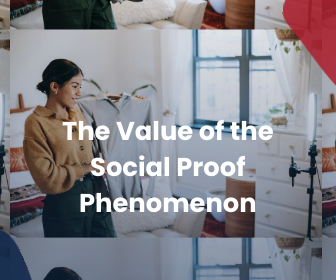
The Social Proof Phenomenon is a foundation piece of how our culture buys now. Between Instagram Influencers, Yelp reviews, and 5 star Amazon products, most of us make purchase decisions on the value others see in the product. How can Social Proof and online reviews work for you?
The Social Proof Phenomenon
What do online reviews have to do with “Social Proof?” “Social Proof” is the phenomenon based on the fact that it’s easier to buy things or trust companies if we know that other people already have. Our peers provide the proof of something’s value. None of us would buy something on Amazon with 10,000 1 star reviews. We trust those 10,000 strangers because that product connects us as a community.
“Social proof” is also part of the transparency that builds brand trust. Most consumers (almost 88%) research a business before buying from them. A lot of that research comes from reviews and reading what other people have said about their experiences.
What Can Social Proof Do For You?
Reviews can help educate consumers on your products and services. Reviewers usually talk about their specific experiences in their reviews. It can be an easier way for potential customers to learn more about what you offer.
Reviews Boost SEO. Specifically, Google Reviews. Google indexes reviews connected to your listing to help filter results. Especially for local traffic. “Best __ Near Me” is decided by reviews and stars. Customers will often use your keywords in reviews without even realizing it. This helps Google learn about you.
What Can You Do To Collect Reviews?
People are inclined to leave reviews if they a specifically positive or negative experience. Therefore, work hard to provide an overwhelmingly positive expertise for your customers! (You should be doing this anyway; the review is just a byproduct. 😉 )
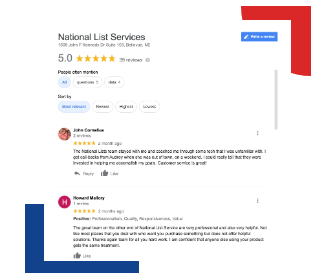
People like to do things for other people so a great way to collect reviews is to just ask for them! A follow up survey email after they buy from you is an easy way to this. Ask them specific, easy to answer questions about things such as: service response times, shipping times, product or service quality etc.
Make it easy to review you. No one has time to take 10 minuets following a complicated review survey with long required written answers. People are doing you a favor by reviewing you, show that you appreciate it by being respectful of their time and effort. Take out pain points of the review process: go through and make sure there aren’t any unnecessary steps or questions. Double check the user interface, id it easy to figure out?
Incentivizing your reviews (specifically ecommerce) is a big no-no! As temping as it is to show your appreciation for the review with a coupon or free shipping, or something: don’t. Both Google and Yelp have policies in place banning incentivized reviews. They will take the reviews down and give you a slap on the wrist.
What To Do With Reviews Once You Have Them
You have the reviews – now what? Here’s 2 ways to leverage them!
- Show them off
Let your reviews sell your product for you. Happy previous customers can be a great way to convince your potentials to buy from you! Show off your reviews on your home page with Google review widget or prominently feature some reviews as part of the design. Don’t forget to ask for permission first if you are going to highlight a specific review, especially if you are going to use their picture. - Engage with reviewers
let them know you appreciate them! It doesn’t have to be a big deal, simply liking the review or just saying thanks goes a long way. That little bit of effort can turn a happy customer into a loyal one. And a lot of marketing automation software makes replying to reviews across multiple platforms easy.
Do you have a favorite customer review?
While we are on the subject… leave us a review! 😜
How do these marketing channels stack up?
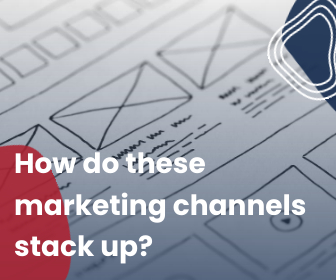
There are A LOT of different marketing channels out there. What are the pros and cons of some of the common ones?
Social Media
Pro
There are over 3.8 billion people on social media around the world. Social media is a fantastic way to connect with customers, build brand loyalty, and generate sales.
People don’t just want to buy from companies because they have good products and services. They want to know what your brand stands for in addition to what it sells. Social media can help potential customers get to you. Social media feel like a 1-on-1 conversation between the brand and consumer, which helps build loyalty.
Con
A lot of the value from social doesn’t show up immediately. It’s rarely simple to track social media’s ROI. Often the goal of social media is not just to generate sales but instead to build connections. Without measurable results, using social media can be discouraging.

Pro
Often it a brand’s only way to communicate with customers and can feel very one on one. A lot of millennial and gen z’ers expect to communicate with brands through email. Also, pretty much everyone has email so you know you will be able to communicate with people through email.
Con
We all get so. many. emails. Most office workers receive 127 every day. It can be hard to stand out from the crowd. People don’t have time to read emails that don’t actually provide them value.
Email marketing also has a lot of laws and rules connected to it that can hurt you if your aren’t careful!
Content/SEO

Pro
Customers often rely on a business’s website for information. Especially for local businesses, it can be the only way to know a shop hours or address. Putting the information on a website instead of a social media or directly in a browser legitimizes the information.
Good SEO gives your website credibility. It makes it easier for people to find your website when they search for it. And it helps create a smoother user experience.
Con
Bad SEO can hurt you. Most searchers never go past the first or second page of Google, though, which is why those top spots in the search results are so coveted. Having the proper SEO can prevent your website form getting organic traffic.
53% of all trackable website traffic comes from organic search. SEO is the main thing influencing how easy it is to find you online organically. Which is probably why it’s estimated that agencies and brands spent over $79.27 Billion on SEO services last year.
Google Ads

Pro
Where are people? On their phones. So, google ads is an extremely effective way to find people where they are. Google ads is great for brand awarness as well as retargeting. It is great if you want measurable results and analytics.
Con
Billboards, signs, posters, newspapers, and magazines all exist with in different physical spaces. With digital advertising however, we are all competing for the same ad space. That ad space is worth more now has less guarantees attached to it.
Trying to figure Google ads can feel like rocket science. There’s a large learning curve and it can a while to feel confident in the set up.
Print and Mail

Pro
Direct mail average open rate is somewhere between 68 and 90%, which is double, triple, or quadruple the average open rates of other marketing channels. Do people who open direct mail actually purchase? Yes! On average people who receive direct mail purchase 28% more items and spend 28% more money!
Why is direct mail so effective? It comes down to fact that we (humans) like getting mail. 41% of Americans of all ages look forward to getting their mail every day. We still want very real things in our hands, which is something totally lost in email inboxes or on social media. That tactile connection translates into 💰.
Con
Since Direct mail requires use of the postal system it has fixed costs. The graphic design of the mail piece may also have an additional cost. Using direct always requires a bit of math and if done wrong can hurt your ROI.
It’s not always posable to see direct, measurable results, from Direct mail campaigns. And if you can measure results, it may take a while to get the full picture.
Another thing that can be a disadvantage to direct mail is that you need a really good foundation of address data. The problem us that a lot of data providers don’t make sure that their data is accurate and that hurts the effectiveness of your campaign.
Connected TV

Pro
TV is a time-tested advertising channel. Although it’s a lot less common than it used to be, it can still be very effective. Many marketers are using CTV (connected TV) or OTT (over-the-top) channels to target consumers using streaming services and connected TV devices such as Hulu and Roku. Advertises are embracing these platforms as more and more ad space becomes available. Spending for CTV advertising is expected to grow from $6.94 billion in 2019 to $8.88 billion in 2020, a 28% increase.
Con
With customer attention spread so thin and cable tv subscriptions consistently falling, (over 16 million in the last five years) there’s a lot less advertising space available. Content consumption is at an all-time high and therefore, competition for viewer’s attention is as well. 84% of marketers say that it is getting harder to grab a consumer’s attention with television advertising alone.
Audiences today expect personalized and relevant targeted ads. Linear TV (cable and network television) often fall far behind in targeting capabilities. Therefore, it can be a challenge for advertisers to figure out how to integrate linear TV into their campaigns.
Let’s Talk: Digital Display
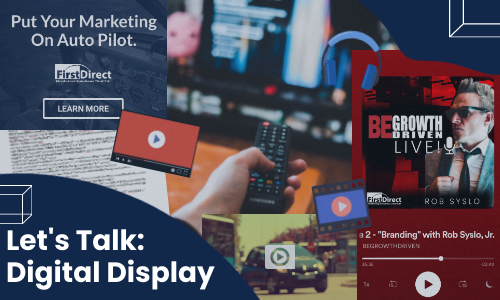
We’ve talked a lot about specific types of Digital Display Ads but what are the differences them? And how do you what type of Digital Display (Or online ad) is the best fit for your business?
What is Digital Display?
Digital Display Ads can be split into 5 main categories:
- Digital Audio Ads
- CTV (Connected TV)
- Video Ads
- Static Ads
- HTML5 Ads
What do Digital Display Ads do?
Digital Display Ads encompasses just about every type of online ad. Each type of Digital Display Ad has its own strengths and weakness. Effective campaigns are often the ones that know how to best utilize each type of ad.
Digital Audio Ads
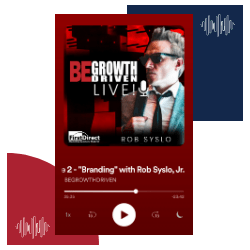
What is Digital Audio Advertising? It’s all the ads you get that are just sound. For example, any podcast, Spotify or Pandora ad is Digital Audio. It’s expected that Digital Audio Ads from just podcasts will surpass a BILLION dollars in 2021 and that the average American will spend nearly 90 minutes a day listening to streamed music or podcasts by 2022.
Digital audio ads are a great way to connect with consumers through a channel that they enjoy. And it is very cost effective, because the ad only plays if they are listening to music or a podcast.
CTV (Connected TV)

Connected TV advertising refers to ads that are delivered to internet-connected TVs – for instance, via Hulu or Roku. CTV is increasing in popularity for marketers! Consumers are embracing these platforms so more and more ad inventory is becoming available. In fact, CTV advertising spend is expected to grow from $6.94 billion in 2019 to $8.88 billion this year, a 28% increase.
The specifies depend on what you need your funnel to accomplish. Some of the processes used are A/B testing, improving user on-page experiences, usability tests, and optimizing existing content.
Video Ads
Video Advertising fits into 2 categories: The ads that play connected to streamed content, such as Youtube ads, and display ads with video content. Those are the ads that start playing a video when your cursor scrolls over it and native video ads.
Video ads are extremely effective. Video content is more eye catching and engaging than static images or text and they are easier to remember. They are great at story telling and promoting brand messaging. Studies show that almost 75% of consumers prefer Video Ads over Text Ads.
Many Video Ads on social media platforms are re-sharable like native content, which makes it easier for consumers to promote your content for you.
Static Ads
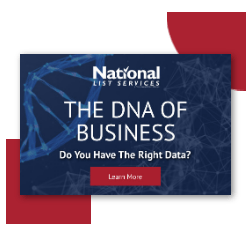
Static Display Ads are probably what you think when you think of online ads. Static Display Ads (or Banners) are the ads that are a solid image of various sizes in designated areas of a webpage or app.
Static Ads are very effective for generating general brand awareness, retargeting, drawing attention to a specific sale, targeting location based traffic, and much more!
HTML5 Ads
HTML5 Ads are attention-grabbing, interactive (or responsive) ads optimized for Google.

HTML5 allows a lot of flexibility and creativity with ads content and formatting. Video, text, imagery, and audio files can all be used. More imaginative ads create more engagement. HTML5 ads tend to have much hight click-through rates than static ads!
HTML5 ads are rendered in code. You are sent to code itself as well as the MP4 video.
What’s the best fit for you?
Every business and situation is different! No one type of ad is best for each business but usually a combination of the 5. Online advertising can be touchy so it’s important to have a strategy.
What’s your favorite type of Digital Display Ads to use for your business?
What Do You Need to Create a Successful Podcast?
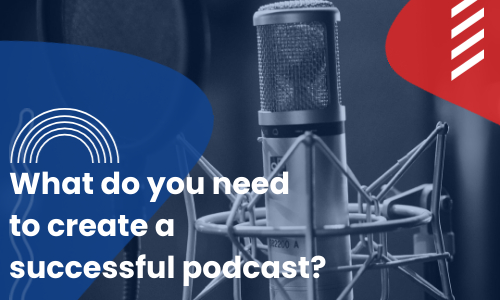
Nearly 51% of adult Americans listen to podcasts!
Here’s the steps you need to create your own successful podcast!
Step One: Get Over Your Fear!
The first step to success is to just start! There’s a lot of fears people have about starting a podcast.
“My voice sounds weird.”
“I don’t have enough technical know-how.”
“The equipment is expensive.”
“A podcast is time consuming.”
Chances are that once you get started, those fears will dissipate!
Step Two: What Do Want To Say?
One of the most important things about starting a new venture, like podcasting, is to have a mission. For example, our podcast, BeGrowthDriven, was started because our mission as a company is to help business grow. We wanted to connect like-minded business and entrepreneurs to share advice and recourses. That goal informs all the decisions we make about the podcast.
How to you want to help your audience or customers? What is the goal of your business? You can expand on that to create your podcast’s mission.
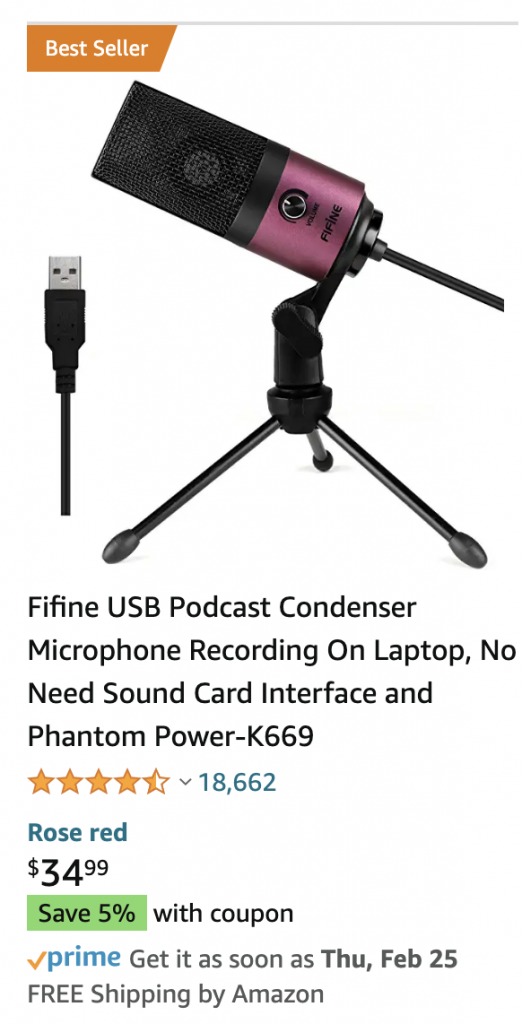
Step Three: Record Your First Episode
You don’t need expensive equipment to get started! (Though podcast mics start at like, $30 on Amazon.) Here’s what tools we have found to be helpful.
Part of recording your episode is the editing and mixing side of things. It’s totally up to you how much editing you want to do! It all depends on what you want the feel of your podcast to be.
Step Four: Publish Your Podcast
There are many directories to publish podcasts on. That big three are iTunes, Spotify, and Google Podcasts.
Doing well on iTunes/Apple Music is the goal. Around 70% of all podcast listens and downloads happen through Apple. It can be trickery to get monetarization on Apple than on Spotify or Google. So, having your podcast available on as many platforms as possible is good idea!
It’s also a good idea to publish three to five episodes at launch to give your new listeners something to listen to.
Step Five: Promote, Promote, Promote
Podcasting has been around for a long time so there are many recourses and tools available for promoting (or learning how to promote) your podcast. Here’s some tips and tricks
- Tap into your guest’s audience
Chances are if they are a good fit to be a guest on your podcast, there audience could also benefit form your content. Make it easy for your guest to share out pull quotes, images, and links from their episode.
- Use social media.
This is kinda a no brainer. Podcasts can be slip into so many different types of content that is easy to post them across many different platforms. Pull quotes do great on Instagram, Facebook, and LinkedIn. Links can be shared on twitter and Facebook. Twitter also has a great SoundCloud integration you can use.
Social media can be used to promote the episode ahead of time as well as sharing past highlights. Social media also is great way to connect with fans and listeners one personal level and add another channel for them to interact with you.
Step Six: Repurpose Content
Podcast content can be repurposed into many other different types of content. We’ve already talked about pull quotes and highlight clips, there’s way more things you can do. For one thing, it’s common place to film the recording of the podcast. That video can be put on YouTube. And video highlights can be put on social media. Putting the video on YouTube also gives you some accessibility features such as closed captioning. Since YouTube is owned by Google, videos on YouTube boost your overall brand SEO which as far-reaching benefits.
Another helpful way to repurpose podcast content is to have the podcast transcribed. If you don’t have time to do that yourself, (understandable: it’s time consuming) companies like Rev.com or Fiverr offer cheap transcription services. Once your podcast is transcribed, it can be used as blog content to make it accessible on another channel and boost SEO.
Step Seven: Get Featured On Other Podcasts!
A great way to promote your podcasts and reach new audiences is to be a guest on other podcasts! The podcast community is well connected and worth tapping into.
Do you have a podcast? We want to hear all about it!
Data & The Instagram Algorithm
The Instagram algorithm is the bane of some people’s existence. And yes, it is confusing since they moved from a chronological feed. It’s important to know how to best leverage the Instagram algorithm to make sure your content is being seen!

According to Instagram, they decide to show your content based on 6 factors:
#1: Interest
#2: Relationship
#3: Timeliness
#4: Frequency
#5: Following
#6: Usage
The first three are somewhat self-explanatory. Instagram shows you things based on what you’ve liked in the past. They highlight posts from people they’ve decided are close to you: people whose content you most engage with, the people who tag you, the people you DM etc. Instagram also cares about when you post. Keeping track of your analytics can give you a good idea about when the best times to post for you are.

#4 Frequency isn’t about how often you post but instead about how often interact with the app. The more often you check your Instagram feed the more likely your feed will be chronological because they are always trying to show you the newest content available. This is helpful to understand what type of Instagram users your followers are. If they don’t check the app that often, then it will be harder to have your posts seen. Building up the other 5 components to the algorithm will be all the more important.
#5 Following
Instagram assigns value to follower counts in a couple different ways. First, is simple: the more followers you have the more likely your posts will be highlighted in your follower’s feeds. However, they also look at your follower’s engagement levels. If you have a lot of ghost followers that don’t interact with you, then they could actually be hurting you. Another thing to consider, the more people your followers follow the more competition for space in their feed. Do your followers follow a lot of people? Understanding that can help you decide if you need to adjust where you focus your efforts.

#6 Usage
This is how Instagram qualifies the amount of time spent on the app. The more time spent on the app, the deeper into its catalogs they have to pull from to show content. You can use this to your advantage by using hashtags or developing content that matches with the interests of Instagram’s heavy users.
What ways do you try to leverage the Instagram algorithm to work for you?
Can You Use Tracking Pixels On Your Website?

We talk a lot about pixels and pixel data a lot. Pixels, also called tracking pixels or marketing pixels are integral to any marketing strategy. Why?
Pixels are little snippets of code added to a website to create an invisible 1×1 pixel graphic. The pixel graphic captures information about your site’s visitors. Information such as when they visited your website, what type of device and the browser they used, what pages they looked at and how long they stayed on each page. Unlike cookies, pixels do not rely on browsers and instead send the information they’ve collected directly to servers. They cannot be disabled in the same way as cookies and can follow visitors across devices.
There are two main types of pixels: retargeting pixels and conversion pixels. They serve different but equally valuable purposes. If you have ever seen an ad on social media after just Googling the brand, then you’ve encountered a retargeting pixel. Retargeting pixels track website behavior then put an ad for a relevant product in the path of the user. They offer instant results because of the lack of downtime between your website and the ad. Unlike retargeting pixels, conversion pixels are usually triggered after or during a purchase. They track the path to the purchase and can connect revenue to specific ads. This helps to see what ads are working.
Why do you need a pixel? They provide insight into audiences, user behavior, and ad campaigns. The data provide can be crucial to putting the right ad in front of the right consumer at the right time. As well providing valuable analytics for campaigns.
Pixels are easy to install and use. And can be used across many different platforms.
With so many benefits, it’s easy to see why so many marketers rely on pixels and their data.
Want help setting up a pixel for your site? We can help. Get in touch here.
Customer Identity in the New Normal

We all acknowledge this this year has created a new normal in marketing. (and everything.) We have learned to be adaptable and prepare for the unexpected. Digital is king and therefore, data is more important than ever. However, we also know that Google is phasing out 3rd party cookies and that iOS 14 allows users to opt out of their IDFA (identifier for advertisers.) It’s a perfect storm of conflicting advertising trends. How do follow our audiences online without being able to identify them?
So, what information do we actually need about our customers? We be able to connect our first party data to the many different advertising personas and IDs that are going to replace cookies. We also need to be able to link personas across different channels. For example, we need to know that the “John” who is currently on our website is the same “John” who is in our CRM, and not another member of “John’s” household. Being able to identify known customers will be crucial to retargeting and analytics.
In order to accomplish this, you are going to need a robust CRM to manger all your first party data. You will also need data provider that is creative and understands how to apply the data.
Pixel data is going to be even more important in identifying customers that are on your website.
Getting consent from customers to use their data is also important, because as soon as someone starts to interact with your brand you should begin to build their profile. We still have over a year before Google starts to phase out cookies, so now is the time to prepare and gather as much 1st party data as possible!
Are Digital Audio Ads Worth The Hype?
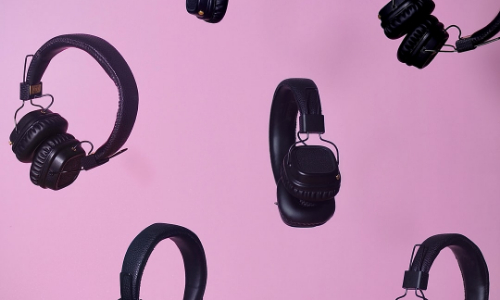
Digital Audio Ads have exploded this year. It’s estimated that advertisers will spend $3.72 billion this year on digital audio advertising. So why all the hype?
What is Digital audio advertising? It’s all the ads you get that are just sound. For example, any podcast, Spotify or Pandora ad is Digital Audio. It’s expected that Digital Audio Ads from just podcasts will surpass a BILLION dollars in 2021 and that the average American will spend nearly 90 minutes a day listening to streamed music or podcasts by 2022.
What’s the advantage of using digital audio ads? They are a great way to connect with consumers through a channel that they enjoy. Due to the nature of podcasts and audio ads, it’s easy to target consumers that are likely to be interested in your product. And it is very cost effective, because the ad only plays if they are listening to music or a podcast. Digital Audio Ads are also a great addition to omnichannel campaigns!
Do you think you could incorporate Digital Audio ads into your campaigns?

